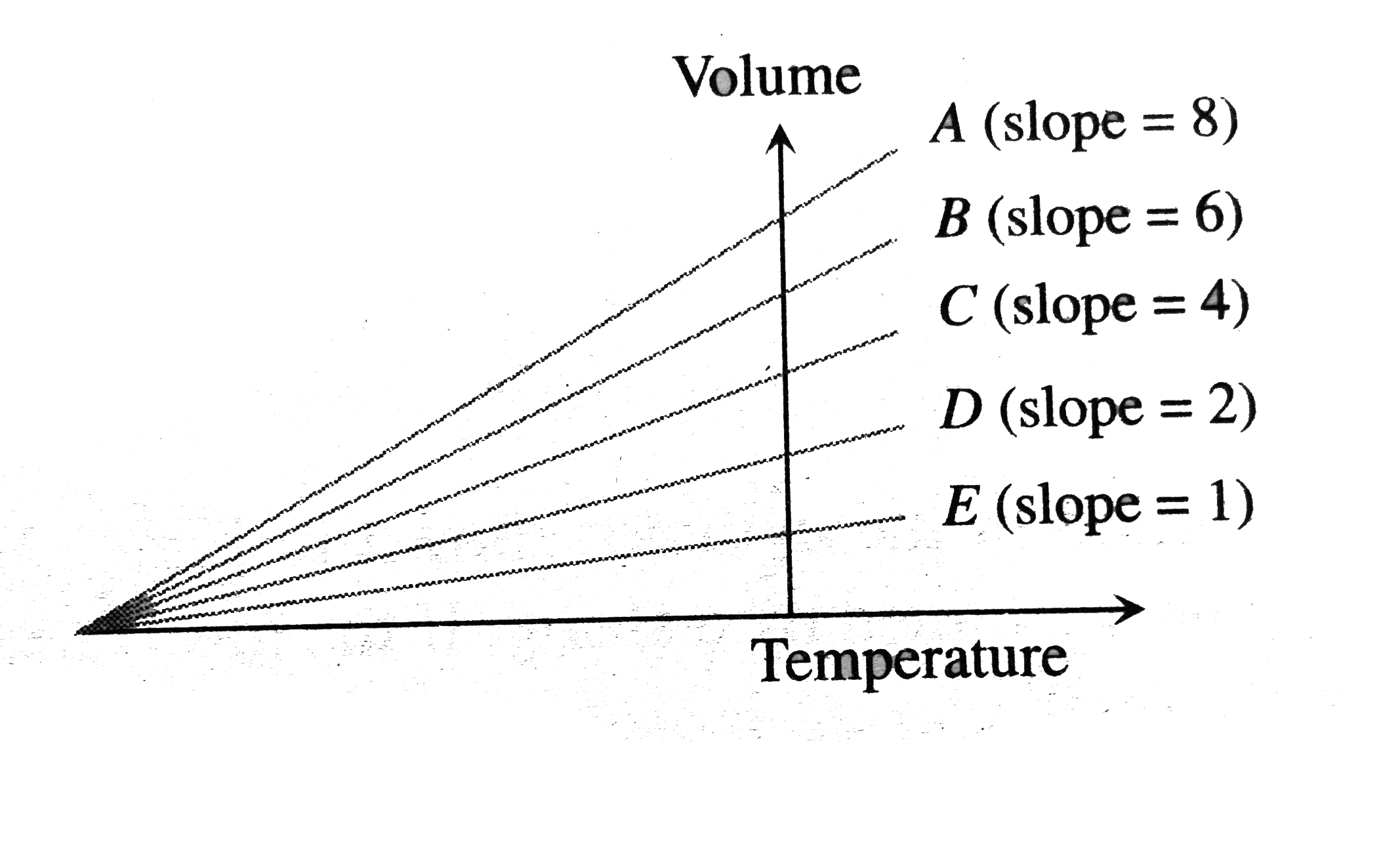The root mean square speed of an ideal gas at constant pressure varies with density d as .
d2
d
√d
1/√d
The correct Answer is:d
To solve the problem of how the root mean square speed of an ideal gas at constant pressure varies with density, we can follow these steps:
1. Understand the Definition of Root Mean Square Speed:
The root mean square speed (urms) of an ideal gas is given by the formula:
urms=√3RTM
where R is the universal gas constant, T is the temperature in Kelvin, and M is the molar mass of the gas.
2. Relate Density to the Ideal Gas Law:
From the ideal gas law, we know:
PV=nRT
where P is the pressure, V is the volume, n is the number of moles, and R is the gas constant. The density d of the gas can be expressed as:
d=mV=nMV
Thus, we can rearrange the ideal gas law to find density:
d=PMRT
3. Express Molar Mass in Terms of Density and Pressure:
Rearranging the equation for density gives:
M=dRTP
4. Substitute Molar Mass into the RMS Speed Equation:
Substituting M into the root mean square speed equation:
urms=
⎷3RTdRTP
This simplifies to:
urms=√3Pd
5. Analyze the Relationship at Constant Pressure:
Since the pressure P is constant, we can see that:
urms∝√1d
This indicates that the root mean square speed is inversely proportional to the square root of the density.
6. Conclusion:
Therefore, we conclude that the root mean square speed of an ideal gas at constant pressure varies inversely with the square root of its density:
urms∝1√d
Final Answer:
The root mean square speed of an ideal gas at constant pressure varies with density d as:
urms∝1√d
The root mean square speed (urms) of an ideal gas is given by the formula:
urms=√3RTM
where R is the universal gas constant, T is the temperature in Kelvin, and M is the molar mass of the gas.
From the ideal gas law, we know:
PV=nRT
where P is the pressure, V is the volume, n is the number of moles, and R is the gas constant. The density d of the gas can be expressed as:
d=mV=nMV
Thus, we can rearrange the ideal gas law to find density:
d=PMRT
Rearranging the equation for density gives:
M=dRTP
Substituting M into the root mean square speed equation:
urms=
⎷3RTdRTP
This simplifies to:
urms=√3Pd
Since the pressure P is constant, we can see that:
urms∝√1d
This indicates that the root mean square speed is inversely proportional to the square root of the density.
Therefore, we conclude that the root mean square speed of an ideal gas at constant pressure varies inversely with the square root of its density:
urms∝1√d
The root mean square speed of an ideal gas at constant pressure varies with density d as:
urms∝1√d
Topper's Solved these Questions
- BOOK - NARENDRA AWASTHI ENGLISHCHAPTER - GASEOUS STATEEXERCISE - Level 230videos
GASEOUS STATE
- BOOK - NARENDRA AWASTHI ENGLISHCHAPTER - GASEOUS STATEEXERCISE - Level 3 Passage 14videos
GASEOUS STATE
- BOOK - NARENDRA AWASTHI ENGLISHCHAPTER - ELECTROCHEMISTRYEXERCISE - Subjective problems14videos
ELECTROCHEMISTRY
- BOOK - NARENDRA AWASTHI ENGLISHCHAPTER - IONIC EEQUILIBRIUMEXERCISE - Subjective problems1videos
IONIC EEQUILIBRIUM
Similar Questions
Knowledge Check
- Question 1 - Select One
The root mean square velocity of an ideal gas at constant pressure varies with density d as
Ad2BdC√dD1/√d
Heat supplied to an ideal gas sample at constant Pressure :
View SolutionThe root mean square speed of the molecule at constant pressure at temperature T is v, what is its root mean square speed, if temperature is reduced to T2.
View SolutionThe root mean square speed of the molecule at constant pressure at temperature T is v, what is its rms speed, if temperature is reduced to T2?
View SolutionRoot mean square speed of an ideal gas at 300 K is 500 m/s. Temperature is increased four times then root mean square speed will become
View SolutionThe root mean square speed of gas molecules at a temperature 27K and pressure 1.5 bar is 1×104cm/sec If both temperature and pressure are raised three times calculate the new rms speed of gas molecules .
View SolutionThe energy density uV of an ideal gas is related to its pressure P as
View SolutionThe expansion of an ideal gas of mass m at a constant pressure P is given by the straight line D. Then the expanison of the same ideal gas of mass 2m at a pressure P/2 is given by the straight line
 View Solution
View Solution
